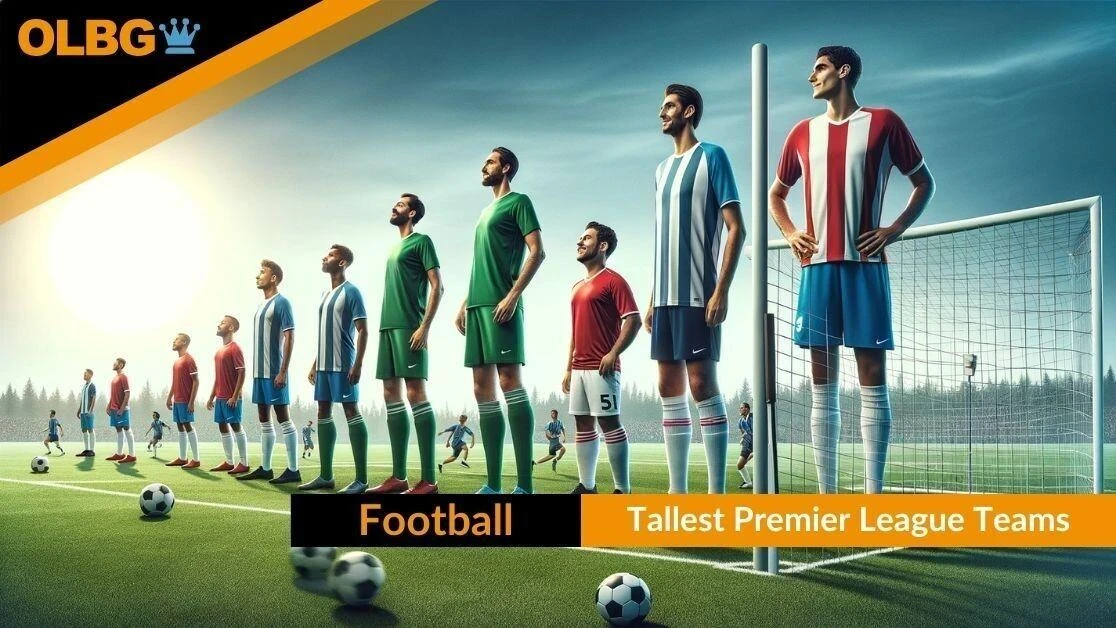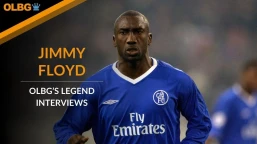
Your data guide to football betting, Dan Tracey shows you where the numbers point before the market catches up.
Do you have to be big to win big? That is the question that is often asked within the confines of the Premier League, and often a consideration when making predictions on your bets with online bookmakers, after all, those set pieces can win and lose matches.
As always, Dan Tracey is on hand to crunch the numbers in the way of research, and his analysis will try to find an answer.
In its simplest terms, the hypothesis will be whether the tallest teams in the top tier have the most success or do the clubs with more diminutive stars have a habit of getting the glory more often than not?
To try and prove or disprove this hypothesis, the first step will be to map out the average player height for each of the 20 teams in the Premier League and if we were to stack the class of 2023/24 from tallest to smallest, it would currently look like this:
| Club | Squad | League Pos |
|---|---|---|
| Everton | 185.16 | 16 |
| Nottingham Forest | 185.10 | 17 |
| Newcastle | 184.72 | 10 |
| Fulham | 184.42 | 12 |
| Chelsea | 184.36 | 11 |
| Liverpool | 183.96 | 2 |
| West Ham | 183.95 | 7 |
| Crystal Palace | 183.63 | 14 |
| Tottenham | 183.58 | 5 |
| Luton | 183.39 | 18 |
| Brentford | 183.38 | 15 |
| Burnley | 183.21 | 19 |
| Manchester United | 183.07 | 6 |
| Sheffield United | 182.97 | 20 |
| Bournemouth | 182.19 | 13 |
| Wolves | 181.63 | 9 |
| Arsenal | 181.48 | 1 |
| Aston Villa | 181.26 | 4 |
| Manchester City | 180.73 | 3 |
| Brighton | 180.00 | 8 |
Everton find themselves top of the shop with an average player height of 185.16cm and although Sean Dyche’s has won vertical honours, the Toffees are only 0.06cm taller than Nottingham Forest in second.

Already we can start to discover an element of insight and this comes courtesy of the two clubs league positions. Both outfits are flirting outside of the relegation zone and we can see that the two tallest teams are currently within the bottom five of the Premier League.
However, two teams in isolation do not give us a definitive answer either way and if we were to say that the tallest teams are all found in the bottom half of the Premier League table, that would not be true either.
If Newcastle as the third-tallest club at 184.72cm are sitting 10th and just in the top half of the table, then you only have to look at Liverpool as the sixth-tallest to see that you do not have to be struggling to hit the heights.
The Merseyside men are 120cm smaller on average when compared to the local rivals Everton and although they are more than a metre down in terms of height, they are 14 places better off when looking at the league table.
This brings us to Liverpool’s nearest rivals and if anything Jurgen Klopp’s men are more of an outlier when comparing height and league positions. Current leaders Arsenal have the fourth-smallest squad at 181.48cm, and Manchester City the second-smallest at 180.73cm.
In addition to this, Aston Villa who are fourth in the Premier League at the time of writing, have the third-smallest squad on average and therefore, three of the top four clubs are in the bottom four when it comes to height.
This suggests a stronger correlation between a lack of height and higher league places than it does taller players and teams at the bottom. A suggestion that is further backed up when you look at the plight of Burnley and Sheffield United.
The Clarets are ranked 12th in terms of average player height but find themselves in the penultimate Premier League position. The Blades are two places worse off in 14th and propping up the other 19 teams in the division.
On the face of it, it looks like there is no positive correlation between the height of a team and a league position and if we were to rank the squad heights from 1 to 20 and correlate the two rankings overall, it would look like this:
| Club | Squad | League Pos | Height Rank |
|---|---|---|---|
| Everton | 185.16 | 16 | 1 |
| Luton | 183.39 | 18 | 10 |
| Wolves | 181.63 | 9 | 16 |
| Arsenal | 181.48 | 1 | 17 |
| Bournemouth | 182.19 | 13 | 15 |
| Aston Villa | 181.26 | 4 | 18 |
| Newcastle | 184.72 | 10 | 3 |
| Manchester United | 183.07 | 6 | 13 |
| Fulham | 184.42 | 12 | 4 |
| Brentford | 183.38 | 15 | 11 |
| Manchester City | 180.73 | 3 | 19 |
| Tottenham | 183.58 | 5 | 9 |
| West Ham | 183.95 | 7 | 7 |
| Liverpool | 183.96 | 2 | 6 |
| Chelsea | 184.36 | 11 | 5 |
| Sheffield United | 182.97 | 20 | 14 |
| Brighton | 180.00 | 8 | 20 |
| Nottingham Forest | 185.10 | 17 | 2 |
| Burnley | 183.21 | 19 | 12 |
| Crystal Palace | 183.63 | 14 | 8 |
| Correlation | -0.3428571429 |
The possible range of values for the correlation coefficient is -1.0 to 1.0. In other words, the values cannot exceed 1.0 or be less than -1.0. A correlation of -1.0 indicates a perfect negative correlation and a correlation of 1.0 indicates a perfect positive correlation. If the correlation coefficient is greater than zero, it is a positive relationship. Conversely, if the value is less than zero, it is a negative relationship. A value of zero indicates that there is no relationship between the two variables.
With the correlation currently at -0.34, there is no direct link between how tall a team is and where they sit in the Premier League table. No correlation but not the end of our research either and this is where set pieces come into play.
If you are going to score from set pieces with your football betting then this is where tall players are worth their weight in goals and by looking at the percentage of goals that each of the 20 Premier League have scored via this medium, this is where the picture starts to get a little clearer.
| Club | Squad | League Pos | Set Piece | Height Rank | Set Piece Rank |
|---|---|---|---|---|---|
| Everton | 185.16 | 16 | 51.72% | 1 | 1 |
| Luton | 183.39 | 18 | 31.58% | 10 | 2 |
| Wolves | 181.63 | 9 | 26.19% | 16 | 3 |
| Arsenal | 181.48 | 1 | 25.71% | 17 | 4 |
| Bournemouth | 182.19 | 13 | 21.62% | 15 | 5 |
| Aston Villa | 181.26 | 4 | 20.34% | 18 | 6 |
| Newcastle | 184.72 | 10 | 18.64% | 3 | 7 |
| Manchester United | 183.07 | 6 | 17.95% | 13 | 8 |
| Fulham | 184.42 | 12 | 17.50% | 4 | 9 |
| Brentford | 183.38 | 15 | 17.50% | 11 | 10 |
| Manchester City | 180.73 | 3 | 17.46% | 19 | 11 |
| Tottenham | 183.58 | 5 | 16.95% | 9 | 12 |
| West Ham | 183.95 | 7 | 15.56% | 7 | 13 |
| Liverpool | 183.96 | 2 | 15.38% | 6 | 14 |
| Chelsea | 184.36 | 11 | 14.89% | 5 | 15 |
| Sheffield United | 182.97 | 20 | 12.50% | 14 | 16 |
| Brighton | 180.00 | 8 | 12.00% | 20 | 17 |
| Nottingham Forest | 185.10 | 17 | 11.76% | 2 | 18 |
| Burnley | 183.21 | 19 | 11.11% | 12 | 19 |
| Crystal Palace | 183.63 | 14 | 9.09% | 8 | 20 |
We know that Everton are the tallest team in the Premier League and now we also know that they have scored more than half their goals from set pieces. 51.72% to be exact and this is where height is paying dividends for Sean Dyche’s men.
With that being said, there will be a slight caveat to such a substantial percentage and this comes from Everton scoring fewer goals than a large number of their Premier League counterparts but when they do score, their aerial power is certainly threatening.
While set pieces are also something that Luton have profited from during their debut Premier League season. The Hatters are third-bottom in the table but have the second highest percentage of goals scored when looking at this measure.
Once again, an attempt at correlation throws up an outlier early on and although Arsenal are the fourth-smallest team in the Premier League this season, they have also managed to score the fourth-highest percentage of set piece goals.
At the other end of the list, Nottingham Forest who are the second-tallest team in the Premier League have scored the third lowest percentage of set piece goals but there is something else to take from the bottom of the ladder.
Three of the bottom four clubs in the league are positioned within the bottom five of set pieces goals scored by percentage and this indicates that if you are struggling, a chronic lack of chances and in turn goals is a fundamental problem regardless of height.
Taking things back to the title race and we can see that Manchester City and Liverpool have far lower percentages when it comes to set piece goals. Less than one in five for both clubs, but with so many available options in terms of attacking, height is far from the be all and end all.
Like before, we can attempt to correlate two sets of figures and see if there are any positive or negative indications and whereas there was a negative correlation between the height of a team and its league placing, when measuring height and set pieces ranks, the correlation is almost neutral.
| Club | Squad | League Pos | Set Piece | Height Rank | Set Piece Rank |
|---|---|---|---|---|---|
| Everton | 185.16 | 16 | 51.72% | 1 | 1 |
| Luton | 183.39 | 18 | 31.58% | 10 | 2 |
| Wolves | 181.63 | 9 | 26.19% | 16 | 3 |
| Arsenal | 181.48 | 1 | 25.71% | 17 | 4 |
| Bournemouth | 182.19 | 13 | 21.62% | 15 | 5 |
| Aston Villa | 181.26 | 4 | 20.34% | 18 | 6 |
| Newcastle | 184.72 | 10 | 18.64% | 3 | 7 |
| Manchester United | 183.07 | 6 | 17.95% | 13 | 8 |
| Fulham | 184.42 | 12 | 17.50% | 4 | 9 |
| Brentford | 183.38 | 15 | 17.50% | 11 | 10 |
| Manchester City | 180.73 | 3 | 17.46% | 19 | 11 |
| Tottenham | 183.58 | 5 | 16.95% | 9 | 12 |
| West Ham | 183.95 | 7 | 15.56% | 7 | 13 |
| Liverpool | 183.96 | 2 | 15.38% | 6 | 14 |
| Chelsea | 184.36 | 11 | 14.89% | 5 | 15 |
| Sheffield United | 182.97 | 20 | 12.50% | 14 | 16 |
| Brighton | 180.00 | 8 | 12.00% | 20 | 17 |
| Nottingham Forest | 185.10 | 17 | 11.76% | 2 | 18 |
| Burnley | 183.21 | 19 | 11.11% | 12 | 19 |
| Crystal Palace | 183.63 | 14 | 9.09% | 8 | 20 |
| Correlation | -0.08872180451 |
This means that the numbers attached to each of the 20 clubs for both height and set piece rankings offer neither a negative or positive pairing. With such disparity between one metric and the other, there is too much randomness to draw a single conclusion.
There are some sprouts of logic in this data. For example Everton being the tallest team and the team that has scored the highest percentage of set piece goals but at the same time, Crystal Palace are the eighth-tallest and have scored the smallest percentage.
Therefore, for every positive link, there seems to be a negative link doing the opposite amount of work. Ultimately, this mean the hypothesis of whether the tallest teams in the top tier have the most success is largely false but with this being captured during a live season, there is still time for change come the end of it.



